As the soft rain soaks slowly into the landscape, the grasses and shrubs that lie in vacant patches between construction sites and farmland unfurl themselves, reaching out to taste the water. The streets are empty but not eerie, just peaceful, and as I walk in total solitude, the wind blasting fine droplets of water into my face dampens the distant sounds of traffic and machinery to a whisper. I find myself close to smiling, muscles relaxing, revelling in this hint of autumn and the relief from the beating sun that draws out crowds of chattering people, barking dogs, the bright colours of their beach towels and windbreaks, the roaring of car engines. All of that can be pleasant for a time, but like the dry heat of the past weeks, it’s gone on too long and left a thirst for change.
Against the heavy grey clouds above the fields, a kestrel – devoid of detail in the gloom but recognisable from its pointed wings and long tail – glides in a straight line and is carried away swiftly on the breeze. The next day when the rain has cleared, she’s perched on a telegraph pole, eyeing clumps of long grasses for signs of voles. A blackbird and her two speckly fledglings dash nervously from the bushes into a tall tree where they can keep an eye on the falcon, while two unremarkable brown birds which could be juvenile stonechats keep a lookout standing on the ends of stalks of dried up wildflowers. In a cavity dug into the centre of a field that’s meant to collect excess water and houses the only grass that has remained lush and green compared to the parched yellow of all the other nearby fields, a large flock of young goldfinches drink and bathe gratefully in the recently formed puddles.
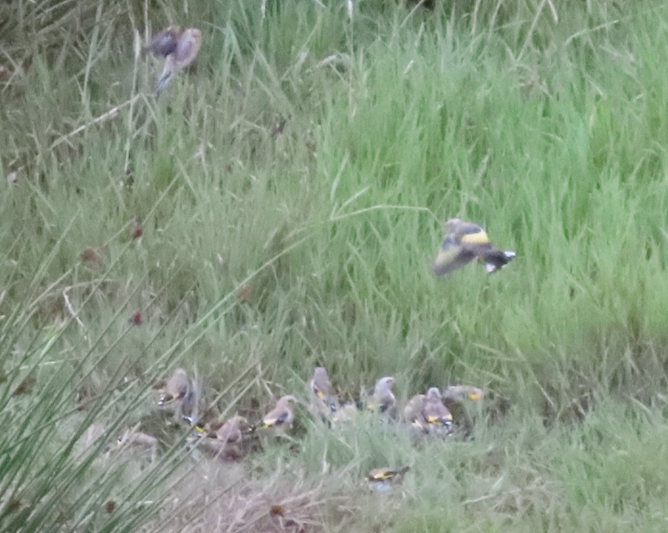
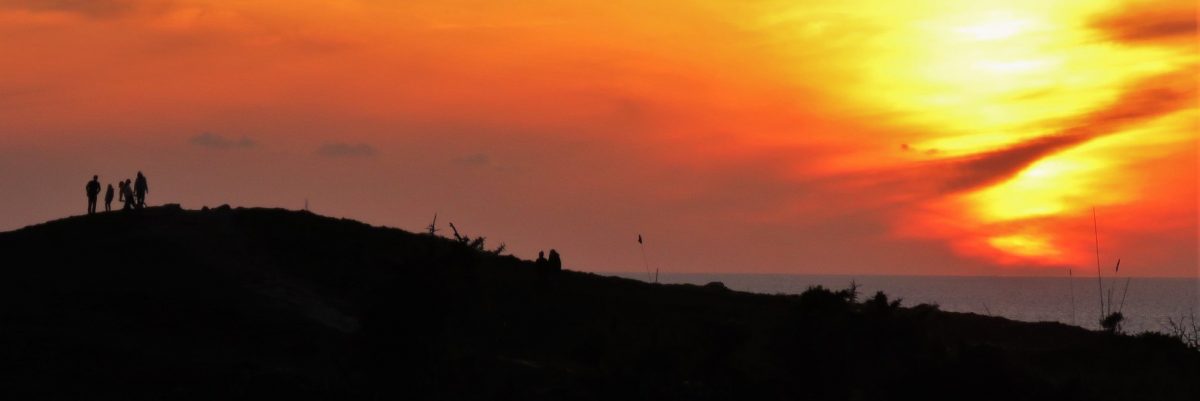
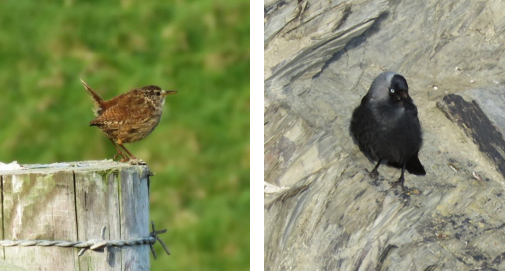
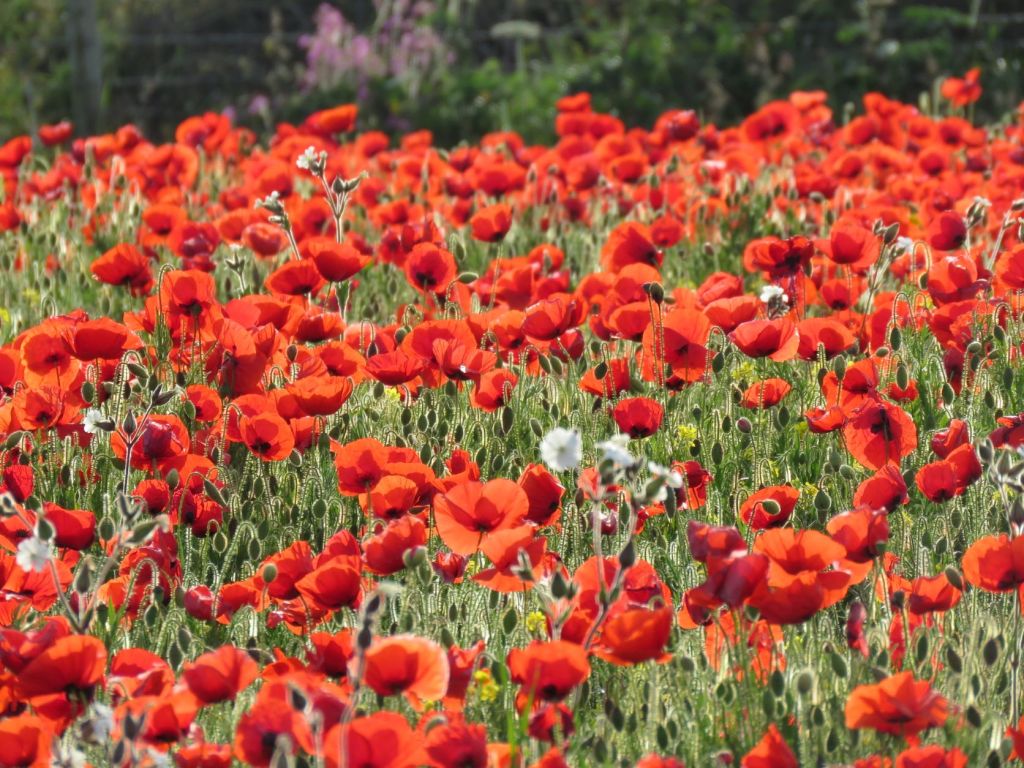
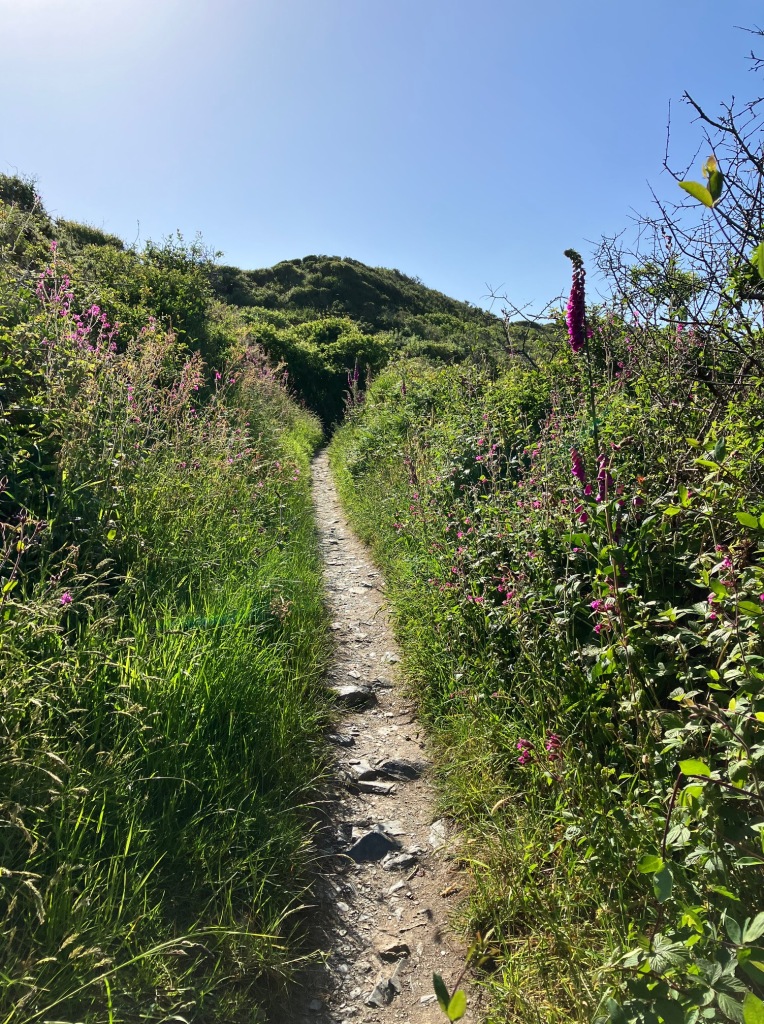
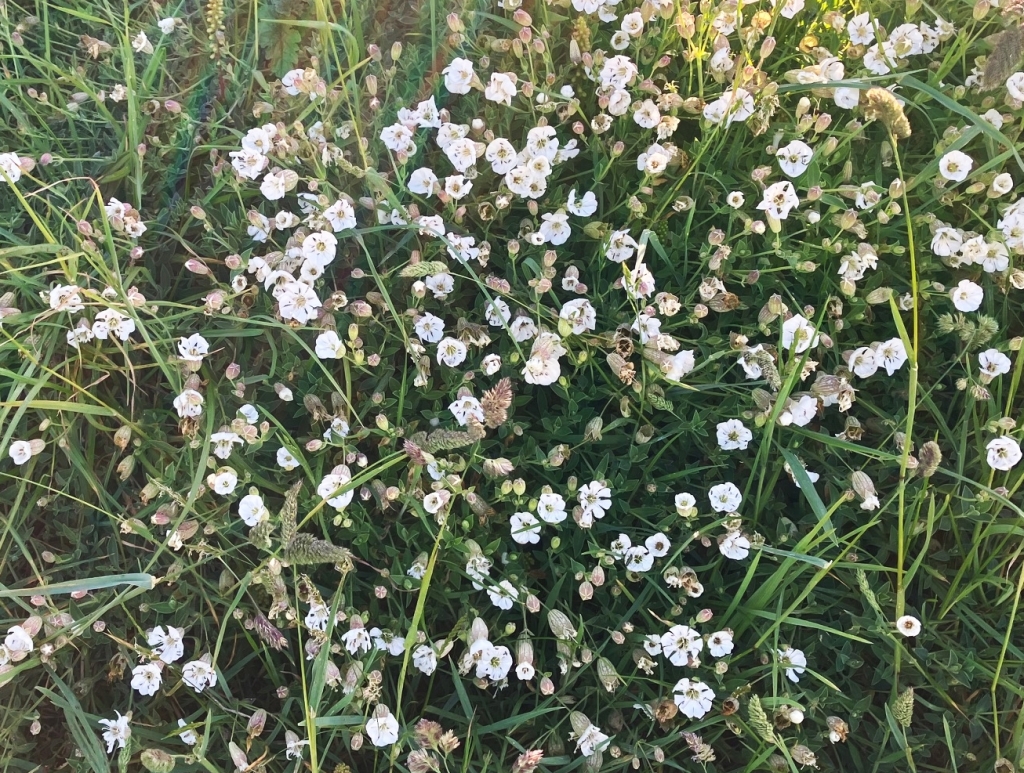
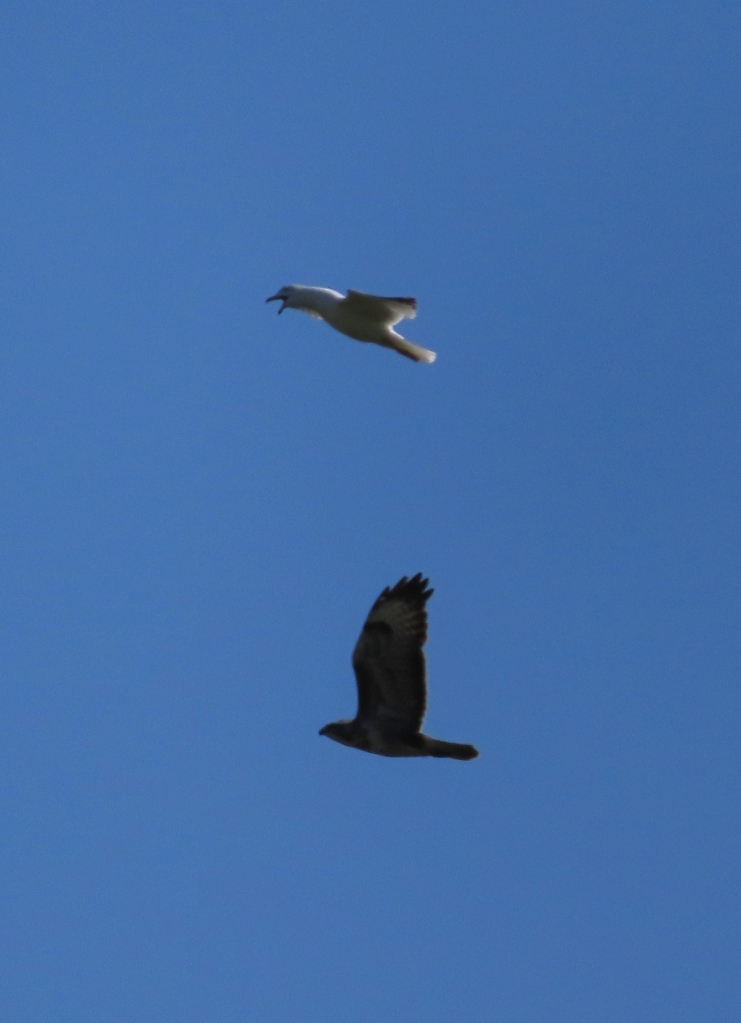
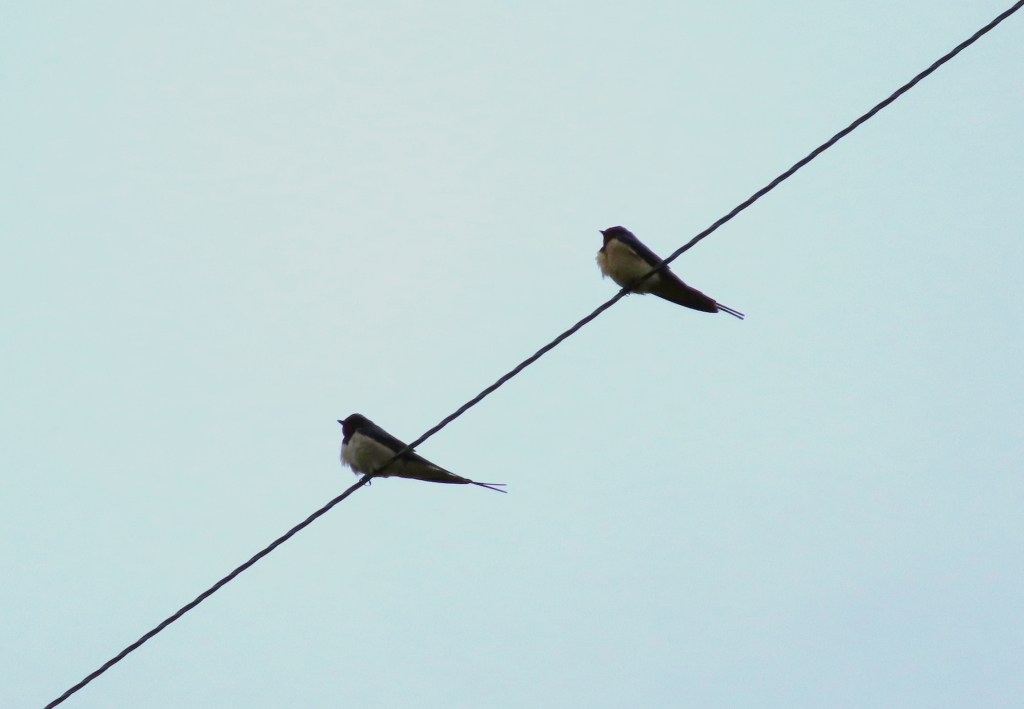
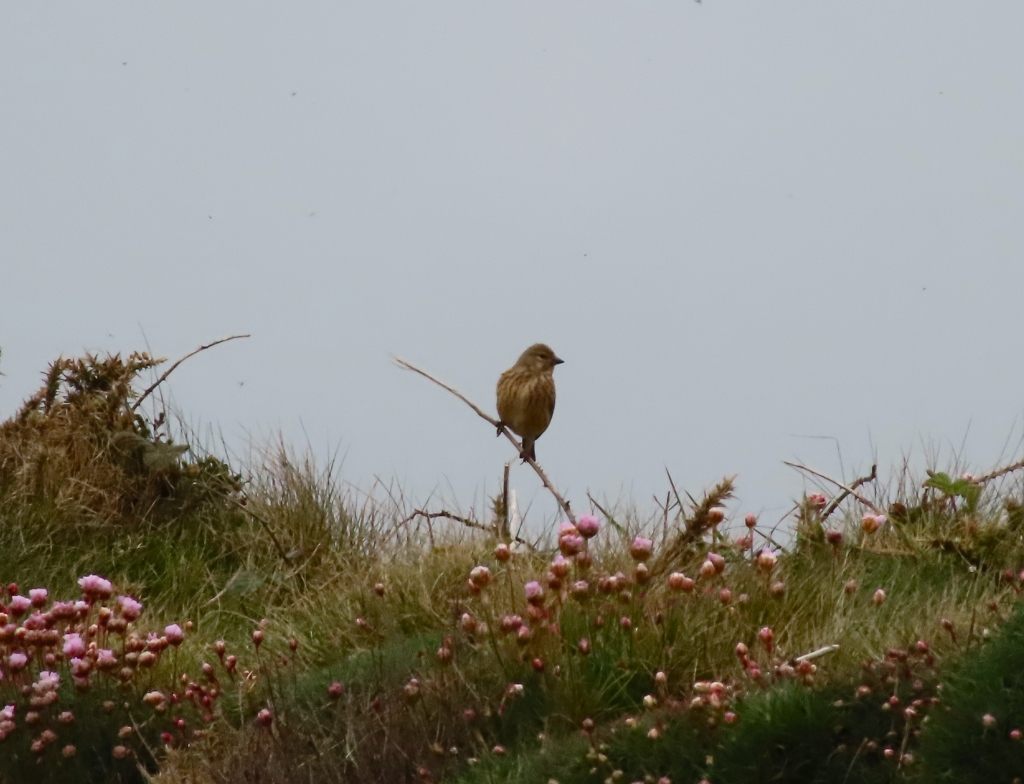
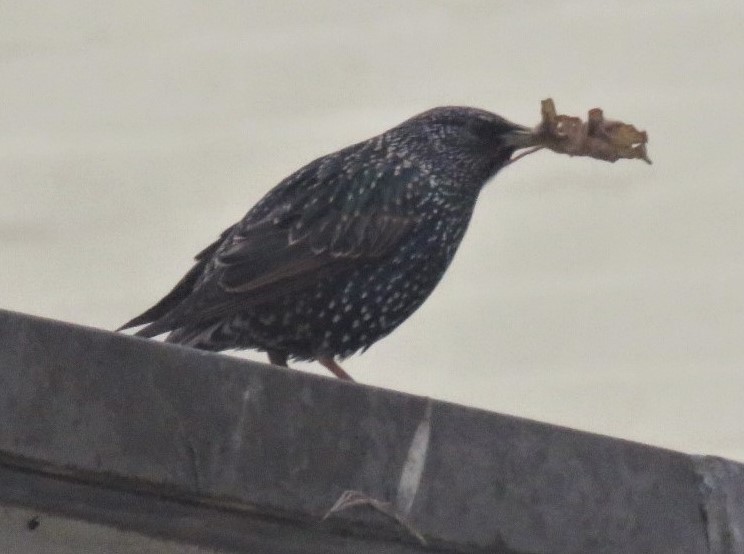
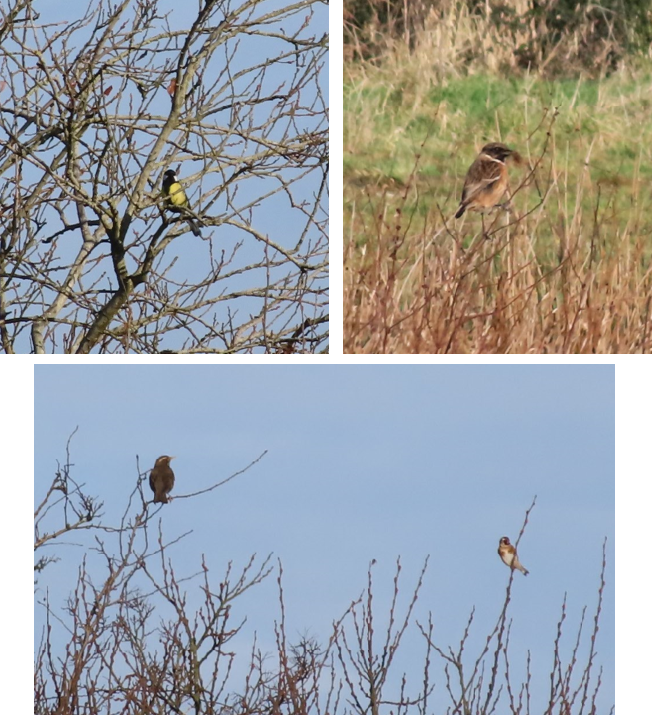
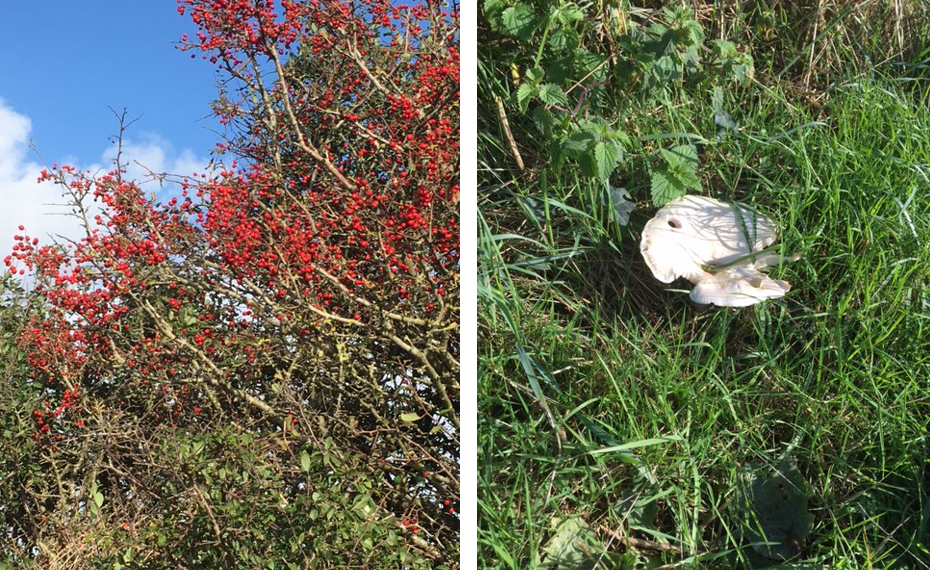
You must be logged in to post a comment.